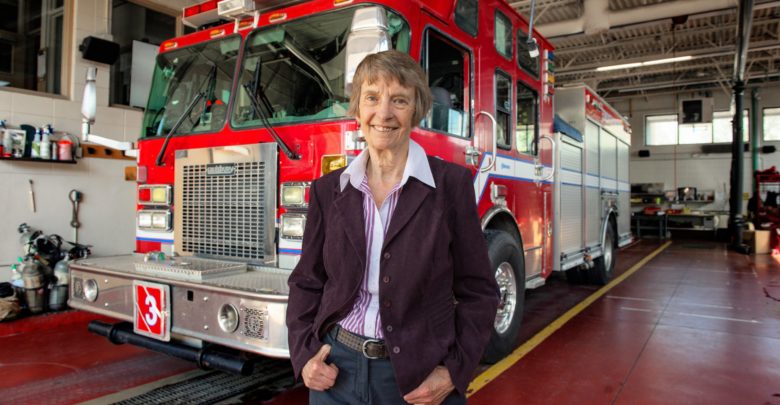 Richard Siemens
Richard SiemensA recent University of Alberta study found a correlation between long-term health issues in firefighters and wildfire exposure.
Lead researcher Dr. Nicola Cherry, occupational epidemiologist and professor in the faculty of medicine and dentistry, modelled this study off of scientific research conducted following 9/11. According to Dr. Cherry, the overarching question of the study was whether exposure to smoke particles affected the lungs of firefighters.
The key findings of the study illustrated a correlation between health issues and exposure to wildfires.
“People heavily exposed during the fire were more likely to have a diagnosis of asthma,” Dr. Cherry said. “Their lung function declined more than people who didn’t have exposure to the fire. When considering the long-term symptoms of exposure — about one in seven firefighters have long-term effects.”
She emphasized the importance of this study when considering wildfires currently burning in Canada. According to Dr. Cherry this study is a starting point for research concerning the health of wildland firefighters.
“For wildland firefighters, there is no recognition that [fighting these fires] may affect their health in the long term,” Dr. Cherry said. “We’re going to be dependent on these healthy young people continuing to fight fires, so we have to look after their health.”
When considering future steps in protecting the health of those fighting fires, Dr. Cherry recognized the unique situation wildland firefighters are in when comparing them to structural firefighters.
“We have been realistic that fighting fires is a dangerous occupation… so the question is how can we reduce [harmful] exposures,” Dr. Cherry said. “Traditionally structural firefighters — who go into buildings — are able to wear self-contained breathing apparatuses… in a wildland fire like Fort McMurray that is not feasible.”
Dr. Cherry recommended looking to improve both structural and administrative components of firefighting.
“We have to ask what else we can do,” she said. “Whether there is protection that is possible to wear under [the] conditions of [wildfires], and what we can do in terms of administrative controls to make sure one firefighter doesn’t fight for 80 hour stretches, and instead different firefighters come in and take over.”
Looking to the future, Dr. Cherry described plans to work with wildland firefighters to see the potential protection N95 masks provides for firefighters.
“At the moment we are working to see where wearing N95 masks — the ones hospital workers wear during COVID-19 — are successful in reducing harmful exposures to particles and symptoms,” Dr. Cherry said.




